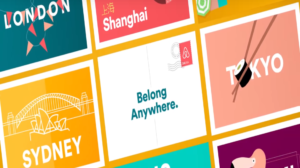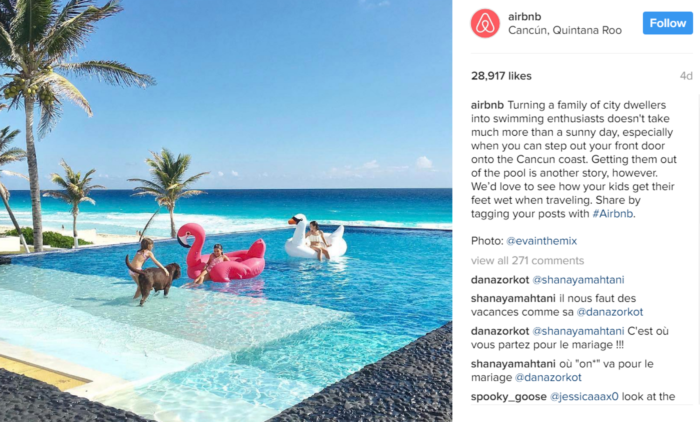The Background
 I was recently asked what my favorite relationship marketing campaign was. The company that came to mind right away was: Airbnb. Why? Because it doesn’t offer any product that is by any means exceptional. Airbnb was not the first company to jump on the sharing economy bandwagon and create room sharing. Nor did not have the first move advantage. And yet, it significantly disturbed the hotel industry and has one of the largest consumer base out of all of its competitors. How did it do it? By taking the functionality of the existing sites and investing in connecting with potential customers.
I was recently asked what my favorite relationship marketing campaign was. The company that came to mind right away was: Airbnb. Why? Because it doesn’t offer any product that is by any means exceptional. Airbnb was not the first company to jump on the sharing economy bandwagon and create room sharing. Nor did not have the first move advantage. And yet, it significantly disturbed the hotel industry and has one of the largest consumer base out of all of its competitors. How did it do it? By taking the functionality of the existing sites and investing in connecting with potential customers.
The Why
Simon Sinek explains in a very famous Ted Talk: “It’s not what you do. It’s why you do it.” This Ted Talk was recorded in 2009 and explained how Apple gained the large market share that it did. It didn’t create anything that was in itself technologically superior to the other technology companies. It simply branded itself as an innovative firm that will take the consumer’s wants into consideration. It seems like such a simple and old concept yet only a few companies have managed to do it. Airbnb is one of those few companies.
Airbnb stands for community and belonging. Anytime that it creates any sort of campaign, the company makes sure to position itself as a company that cares for its users and fosters community. The company’s aim is to make the user feel at home anywhere that they travel, instead of simply providing them with a home. This is most clearly seen through the commercial that introduces the company’s logo, the Bélo.
The How
 Through the brand audit that my team and I conducted this past fall, we analyzed ways that Airbnb interacts with customers and tries to increase long-term engagement. One way that Airbnb creates this community is by engaging with consumers on social media. On Instagram, for example, Airbnb encourages users to use the hashtag #Airbnb in order to be featured on the company website. If the company likes your picture, it creates a post showing how, in this scenario, city dwellers easily belong to the swimming enthusiast community. Crediting the picture on their company website makes the user feel as though he is part of a community. Also, the boost in likes makes the user feel appreciated and those happy feelings, ideally, rub off on Airbnb.
Through the brand audit that my team and I conducted this past fall, we analyzed ways that Airbnb interacts with customers and tries to increase long-term engagement. One way that Airbnb creates this community is by engaging with consumers on social media. On Instagram, for example, Airbnb encourages users to use the hashtag #Airbnb in order to be featured on the company website. If the company likes your picture, it creates a post showing how, in this scenario, city dwellers easily belong to the swimming enthusiast community. Crediting the picture on their company website makes the user feel as though he is part of a community. Also, the boost in likes makes the user feel appreciated and those happy feelings, ideally, rub off on Airbnb.
The Network Effects
With its now large user base, Airbnb leverages its two-sided network effects by including non-monetary benefits such as “Things to do”. Producers (i.e. room suppliers) can add various attractions and places to eat thereby advertising why a consumer should go to that city. While this is a free feature, it encourages more users to join the platform and grow the network effects. This is beneficial for the producers as they have a higher possibility of filling their vacancies. This is beneficial for consumers who will have a larger room selection, since more users means attracting more producers. Finally, this is beneficial for Airbnb because more producers and more users means more revenue. These non-monetary benefits foster customer relationships as it encourages long-term engagements between the users, the producers and the platform.
There is so much that I can say about Airbnb but I just wanted to quickly highlight the main points. Essentially, whenever someone thinks “travel” or even just “things to do”, Aribnb aims to be the company that pops up in the customer’s mind. It does this by fostering customer relationships through Twitter and by doubling down on its network effects.
What are some of the other ways that Airbnb improves its CRM? Can you think of any other companies that were late entrants but somehow earned a large market share? How did they do it? Feel free to comment below!